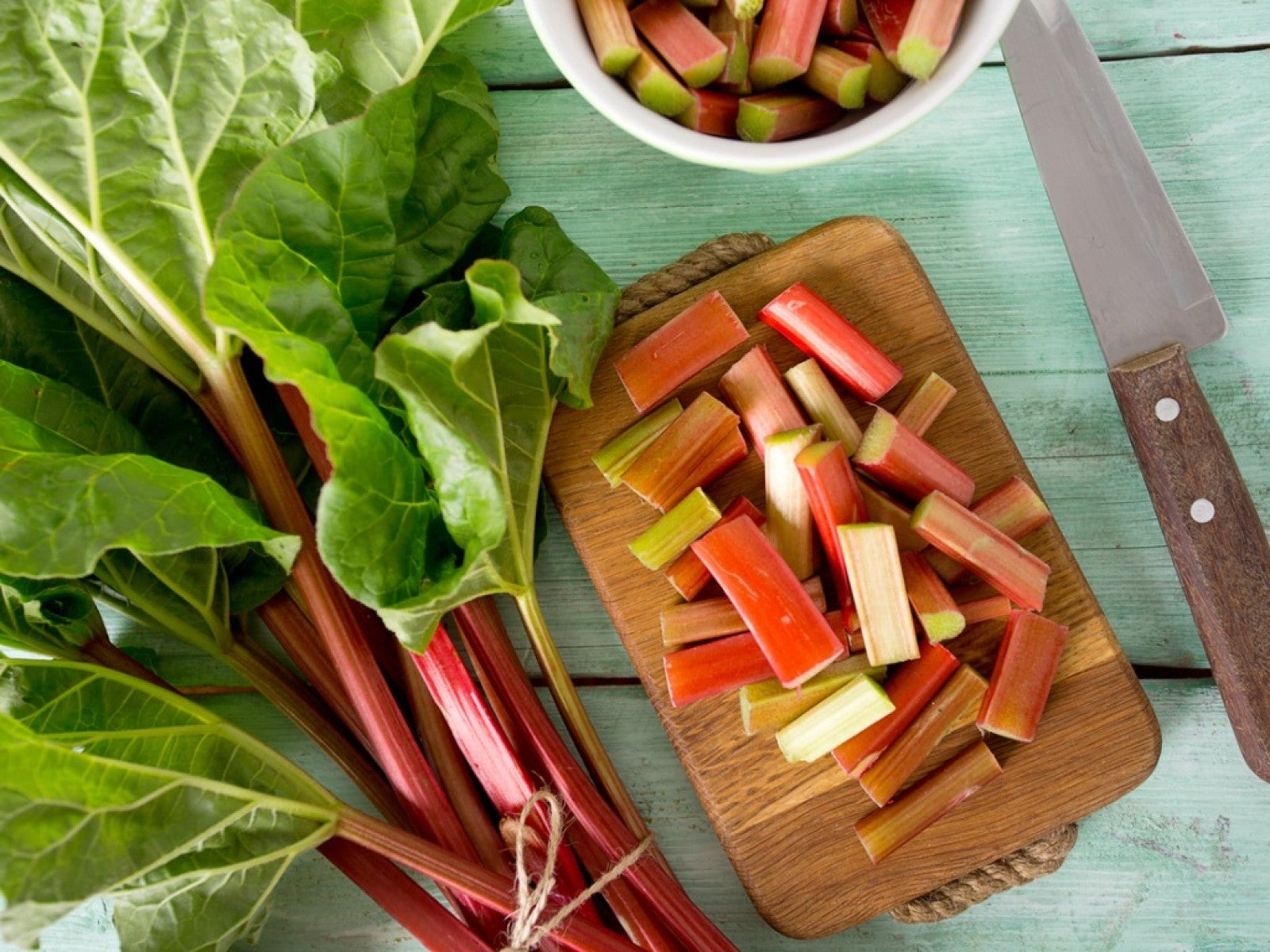How To Store Rhubarb & Preserve Post-Harvest


What are the methods of rhubarb preserving that will help to store this versatile vegetable year around? Rhubarb is a vegetable but is often thought to be a fruit. It is mostly used in sweet applications but can also be a savory addition. It has a short season, only blushing during the spring in most regions. So can you freeze fresh rhubarb? Learn how to preserve rhubarb and enjoy the tart goodness of this gorgeous vegetable even in winter.
Store & Preserve Your Rhubarb Harvest
The best time to harvest rhubarb is when the stalks have become red, although a few varieties never color up and remain green. It is often made into a sauce, added to cake, quick breads, pies, and more. Only the stalks are safe to eat, as the leaves can be toxic. Rhubarb is high in Vitamin C, fiber, and potassium, as well as being low in carbohydrates and calories. Select rhubarb that is firm and without blemish. The more slender stalks are more tender and not as stringy.
How Long Can You Keep Rhubarb After Picking?
The best way to store rhubarb after it has been freshly cut is in the refrigerator. Here are a few tips on how to store rhubarb in the fridge.
- Use the stalks within a few days of harvesting.
- Store rhubarb away from ethylene producing foods like apples or peaches.
- Some cooks like to peel the stalks before use to remove the fibrous filaments but this is not necessary in most cases, except when the stalks are very large.
- To store rhubarb longer it may be canned, frozen, or dehydrated.
Storing Rhubarb in the Fridge
Cut the leaves off the stalks. Wash the vegetables thoroughly. Let them dry a bit and then wrap them in a dampened kitchen towel. Place this in a bag and store it in the crisper drawer of the refrigerator.
The stalks can also be stored vertically in a glass of water in the fridge. Place the cut end into a glass of water that just covers the end and leave the leaves on. Change the water daily. Remove the leaves before use. Rhubarb stored in the crisper will last a bit longer than that in a glass of water.
Best Ways to Store Rhubarb Long Term
Longer term storage of rhubarb requires cooking, drying, or freezing. Cooked rhubarb will become very soft and sauce-like. Frozen rhubarb will retain its shape but once thawed the interior will be softened. Whether you blanch rhubarb before freezing, or freeze it raw will depend upon how it will be used. Dried rhubarb may be reconstituted prior to use if necessary.
Storing Rhubarb in the Freezer
There are 3 ways to freeze rhubarb. The easiest is to wash the vegetable, cut the stalks into 1 inch ( 2.5 cm) sections and place the pieces into a sealed bag or container with the air removed.
Sign up for the Gardening Know How newsletter today and receive a free copy of our e-book "How to Grow Delicious Tomatoes".
The second method will see the vegetable prepared the same way but blanched in boiling water for 1 minute. Immediately remove the rhubarb and chill in an ice bath. Let the fruit dry before placing it in bags or containers to freeze. Rhubarb can also be boiled in sugar syrup. Drain away the syrup before freezing for best results.
Finally, rhubarb can be frozen in a syrup pack. It does not need to be cooked. Cut the vegetable into sections and place it into a container. Fill this with a 40 percent syrup/water ratio. Frozen rhubarb should be used within 12 months.
Drying Rhubarb
To dry rhubarb, wash, dry, and cut the stalks into sections. Smaller lengths will take less time to dry. Lay the pieces out in a single layer in a food dehydrator. After the moisture is removed, seal the food in bags and store in a cool, dark, location for up to 12 months. Rhubarb may also be dried on racks in a low oven. To use the dried vegetable, it may be soaked in hot water for a minute, drained, and added to recipes.
How to Preserve Rhubarb by Canning
By turning the vegetable into a preserve and canning it, rhubarb will last even longer than the other methods. Rhubarb is acidic enough for water bath canning. It can be canned in a simple syrup, or made into chutney, or sauce. Rhubarb can also be cut into pieces and macerated in sugar for 2 hours, which will cause it to release juices. Cook the rhubarb in these natural juices for enhanced flavor. Sterilize the jars, cook the rhubarb, and fill the jars leaving a bit of space at the top. Process them in boiling water for about 15 minutes.
Using Rhubarb
Rhubarb’s tartness makes an excellent chutney to serve alongside meats, especially gamey meat. It can be made into a sauce to top ice cream, or a jam for toast. Add it cooked or dried into cakes, breads, cookies, and pies. Create a rhubarb syrup to add to cocktails and other drinks. A true classic rhubarb use is in a rhubarb strawberry pie. The berries compliment the tart stalks for a perfectly balanced dessert.

Bonnie Grant is a professional landscaper with a Certification in Urban Gardening. She has been gardening and writing for 15 years. A former professional chef, she has a passion for edible landscaping.